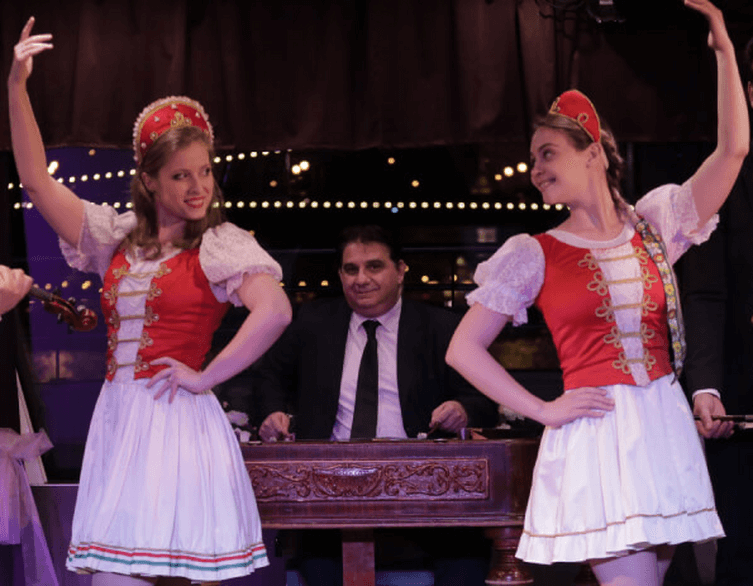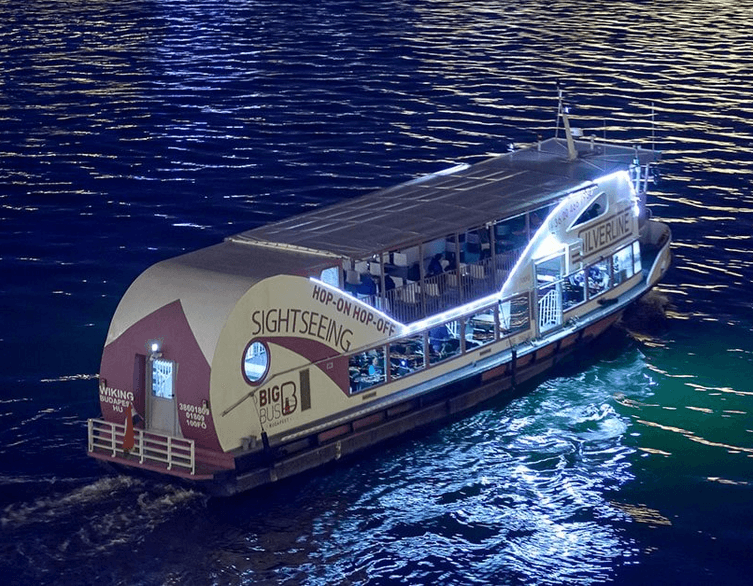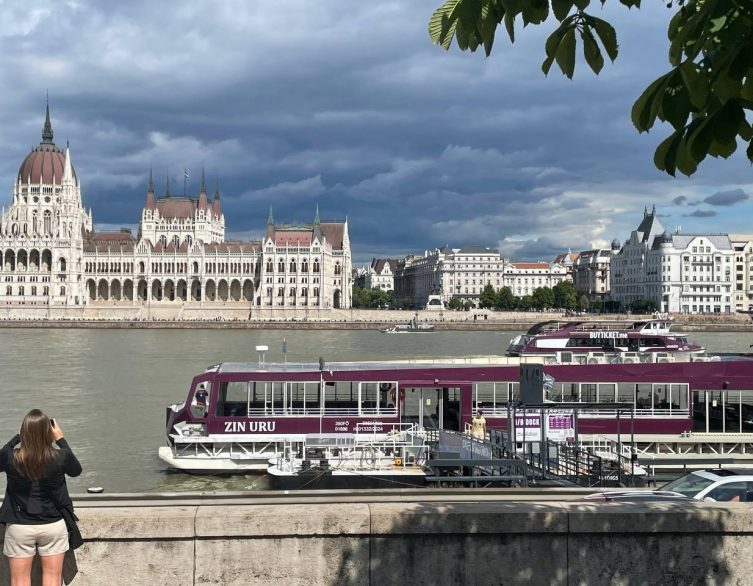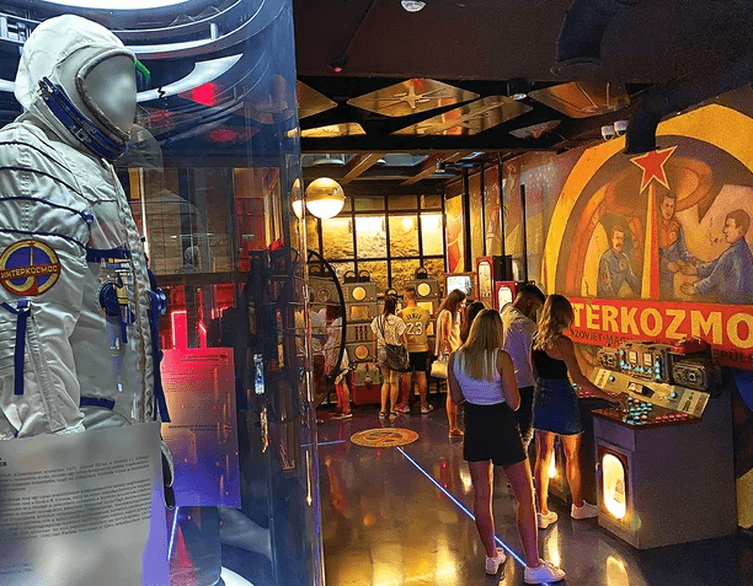Budapest’s Memento Park: The World’s Most Unique Communist Statue Museum
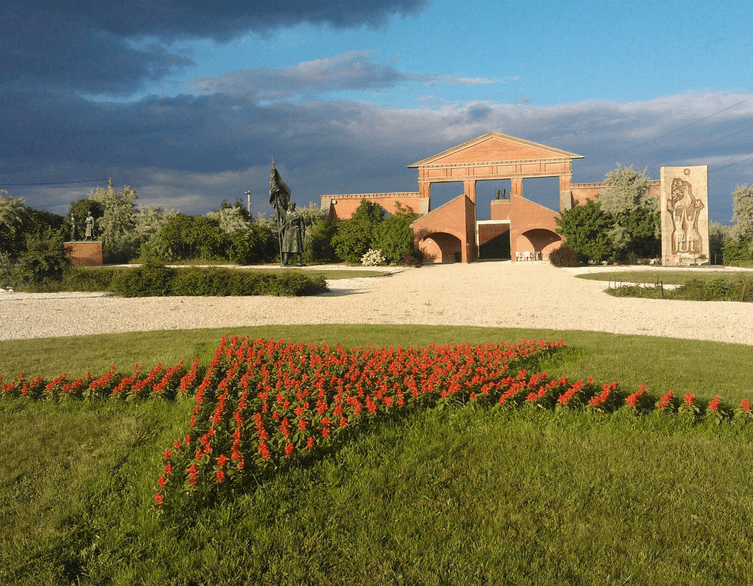
Over thirty years ago, Budapest made an extraordinary decision that would create one of Europe’s most fascinating tourist attractions. When the city began removing communist-era monuments from its streets in September 1992, instead of destroying these controversial symbols, Budapest chose preservation – creating the world’s first and only communist statue graveyard, the Memento Park.
From Soviet Occupation to Democratic Symbol
The Historical Background
Hungary’s journey to Memento Park began in 1945, when the country emerged from World War II under Soviet occupation. The communist regime that followed erected thousands of public monuments across the country, celebrating communist ideals, Soviet occupiers, and collaborating leaders. For over four decades, these massive bronze and stone figures dominated Budapest’s squares and streets, serving as constant reminders of authoritarian rule.
When Eastern European dictatorships collapsed in 1989-90, Budapest faced the same question confronting cities across the former Soviet bloc: what to do with these unwanted monuments? While some advocated for destruction – the most radical solution – Budapest’s Municipal Council chose a different path. Rather than erasing history, they decided to preserve it with context.
The idea originated from an unexpected source. In July 1989, academic László Szörényi proposed creating a “Lenin Garden” where tourists could pay to see communist statues. Writing in the journal Hitel, he remarkably predicted that visitors to the planned 1995 World Exhibition would “crowd to see the world’s first Lenin garden” and even “pay in hard currency.”
The Great Removal
The systematic removal began on September 14, 1992, with the goal of clearing most designated monuments by October 23rd – Hungary’s national holiday commemorating the 1956 revolution. The Budapest City Assembly had asked district governments in January 1991 to nominate which statues should be relocated, ultimately selecting 58 out of approximately 1,000 public artworks across the city.
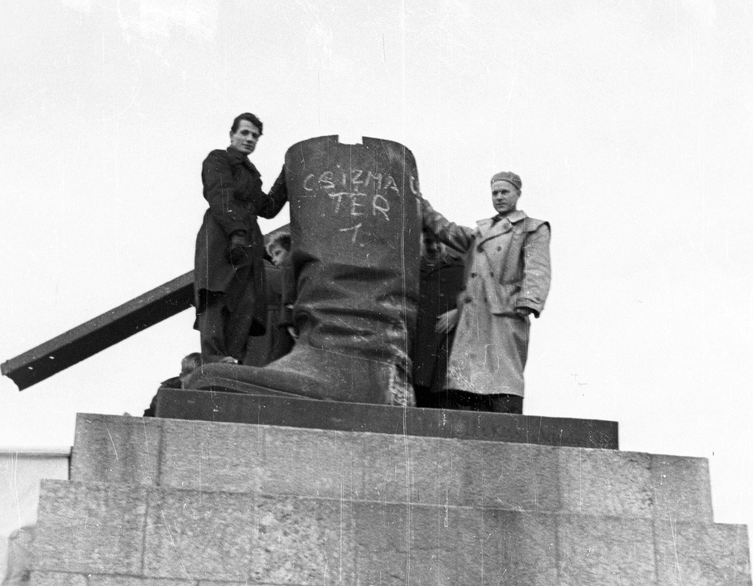
Source: Fortepan
The city allocated 50 million forints for this massive undertaking, treating each statue like a piece of history worth preserving. Experts from the Budapest Gallery supervised the careful dismantling and relocation process, ensuring these controversial artifacts would find new life in a dedicated memorial space.
Architectural Vision: More Than Just a Statue Dump
The Winning Design
The Municipal Council launched a design competition in 1991, won by architect Ákos Eleőd with his haunting concept “One Sentence on Tyranny” – Statue Park. Eleőd’s vision transformed what could have been a simple storage area into a profound meditation on dictatorship and democracy.
The park’s entrance serves as a powerful metaphor – a monumental facade where only the side doors open, leaving the center permanently sealed behind steel inscribed with lines from Gyula Illyés’ poem “One Sentence on Tyranny.” This “facade wall” represents what art historian Géza Boros called the “facade of communism” – a grand promise with nothing behind it.
Architectural Philosophy
Eleőd designed every element with careful consideration. The red brick construction echoes socialist-realist architecture, while the layout follows a deliberate path that “leads nowhere” – symbolizing the dead end of totalitarian ideology. As the architect explained: “This park is about dictatorship, but the moment this can be said, written, and built, this park becomes about democracy. Only democracy can provide the opportunity to think freely about dictatorship… or democracy… or anything.”
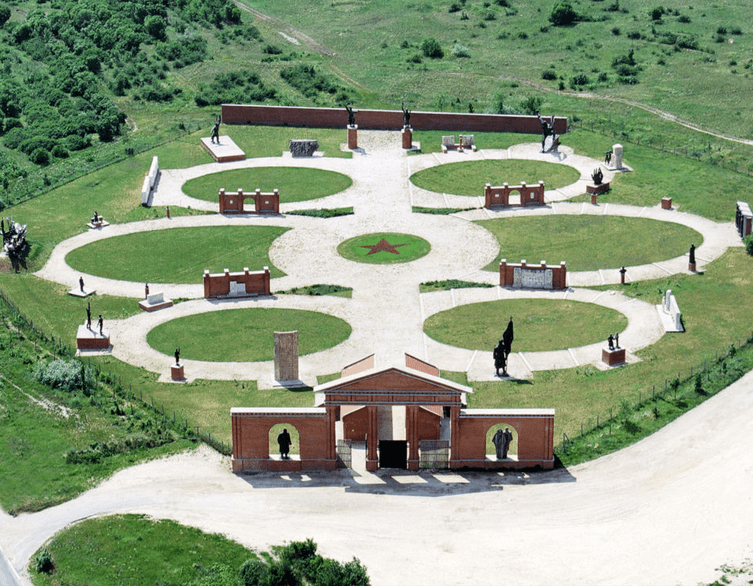
Source: Memento Park Budapest
The park officially opened on June 27, 1993, marking the second anniversary of Soviet troop withdrawal from Hungary. The timing was symbolic – a celebration of freedom through the very act of being able to critique the past.
The Cast of Communist Characters
The Ideological Fathers
Walking through Memento Park feels like entering a surreal outdoor theater. Visitors encounter the imposing figures of Marx and Engels, whose cubist representation by sculptor Segesdi György stands as the world’s only such statue of the communist philosophers. These monuments once dominated Jászai Mari Square near the former Communist Party headquarters, stirring considerable controversy when removed in 1992.
Lenin stands contemplatively with his hand on his lapel, created by Pátzay Pál in 1965 during the Kádár era’s attempt to legitimize itself through Soviet symbolism. Art critics describe it as a “mediocre transitional work,” but it perfectly captures the awkward position Hungary found itself in during the Cold War.
The Highway Guardians
Two of the park’s most beloved monuments tell a different story – the statues of Soviet officers Steinmetz Miklós and Osztapenko. These figures weren’t just political symbols but genuine Budapest landmarks for decades. Steinmetz greeted travelers heading toward Vecsés, while Osztapenko welcomed generations of families driving to Lake Balaton for summer holidays.
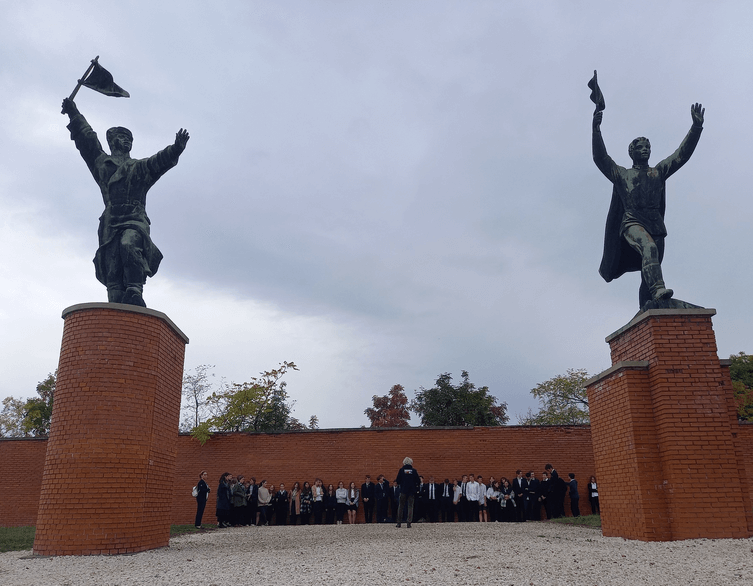
Source: Memento Park Budapest
Both officers died on December 29, 1944, while delivering ultimatums to German forces. Their stories embody the complex relationship between liberation and occupation that defined Hungary’s post-war experience. Locals developed such attachment to these monuments that their removal sparked genuine debate about whether political art could transcend its original purpose.
Stalin’s Boots and the Symbol of Revolution
Perhaps the park’s most powerful symbol isn’t a complete statue at all – just a pair of bronze boots standing atop a faithful replica of Stalin’s original tribune. These boots represent all that remained after revolutionary crowds sawed off the dictator’s eight-meter monument at the ankles on October 23, 1956, creating one of the most iconic images of liberation in Hungarian history.
The original statue, created by Sándor Mikus and meant to be “more lasting than bronze,” lasted just five years before becoming a symbol of freedom rather than oppression. Today, visitors can climb the replica tribune where communist leaders once waved to forced crowds, but now tourists wave to each other in a celebration of democratic freedom.
The Controversial Figures
Not every statue represents wartime heroism. Béla Kun’s memorial, created by Imre Varga in 1986 – ironically just years before the regime’s collapse – honors the leader of Hungary’s brief Soviet Republic in 1919. Kun, responsible for the Red Terror that claimed hundreds of innocent lives, received his monument during the communist regime’s waning years, highlighting the system’s desperate attempts at self-legitimization.
The “Coat Check Attendant” – locals’ nickname for the dynamic Council Republic memorial – appears to charge forward with a banner. This eight-meter figure, inspired by a 1919 propaganda poster, occupied the site where the regime had demolished a church, symbolizing communism’s assault on traditional institutions.
Beyond the Statues: A Complete Cultural Experience
The Barracks Cinema
The park houses Hungary’s most unusual movie theater – the Barracks Cinema, which screens “The Life of an Agent,” a fascinating 2004 documentary compiled by director Gábor Zsigmond Papp. The film uses actual training materials from the Ministry of Interior’s secret film studio, which produced hundreds of educational films between 1958 and 1988 to train secret police officers.
Best deals of Budapest
The documentary reveals the once-strictly classified methods used to recruit informants, conduct surveillance, and maintain the communist state’s extensive network of spies and collaborators. The film consists of four 10-15 minute segments covering surveillance techniques, house searches, recruitment tactics, and effective network operations.
Historical Exhibitions
The photo exhibition chronicles both the 1956 revolution and the 1989 regime change, centered around the monumental and shocking Stalin boots that simultaneously symbolize dictatorship and its downfall. The display summarizes the common freedom struggle of these two pivotal moments in 20th-century Hungarian history.
In the concrete bunker beneath Stalin’s tribune, visitors can see the world’s unique “Child Lenin” bust, formerly displayed at an authentic Soviet pioneer camp. This haunting artifact represents the regime’s attempt to indoctrinate children from an early age.
The Trabant Experience
For the ultimate authentic experience, the park offers Trabant transfers – arriving in genuine East German “people’s cars” complete with their distinctive puttering engines, blue exhaust clouds, and unforgettable smell. These vehicles, once the dream of socialist families despite their limitations, now provide visitors with an unforgettable sensory journey into the communist era.
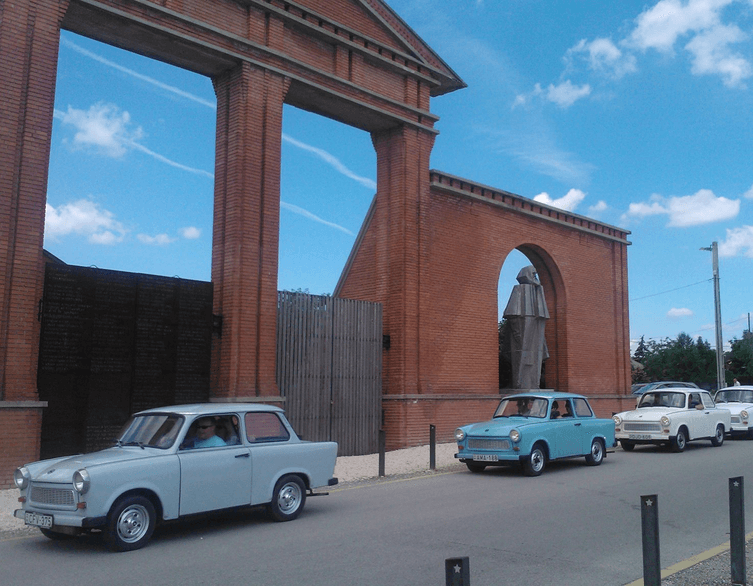
Source: Memento Park Budapest
The full Trabant experience includes door-to-door transfer within Budapest, park admission, a drink at the Red Star Store, and guided tours available in Hungarian or English. The three-hour program costs 88,800 HUF per Trabant (up to 3 people), offering an immersive way to experience “existing socialism’s” authentic atmosphere.
Special Tours
The park offers themed Trabant tours, including visits to 1956 revolution sites like Kossuth Square (site of the Parliament shooting), Corvin Passage (scene of the Soviet Army’s first defeat), and the New Public Cemetery (resting place of revolution martyrs). The “Workers’ Movement” tour explores the Fiumei Road Cemetery’s Workers’ Movement Pantheon, including the graves of communist party secretary János Kádár and executed communist interior minister László Rajk, plus a visit to a classic socialist-realist housing estate.
The Red Star Store
No visit is complete without browsing the Red Star Store, a treasure trove of retro memorabilia and period artifacts. Here you’ll find original Soviet badges and decorations, revolutionary songs, authentic Soviet postcards, reproductions of political propaganda posters, tin mugs, and even guaranteed fake Soviet passports – all available at this “communist tobacco shop” operating alongside the ticket office.
Planning Your Visit
Getting There
Memento Park is located in Budapest’s 22nd district at the corner of Balatoni Road and Szabadkai Street. Public transportation offers several convenient options from Kelenföld Railway Station (Metro Line 4):
From Őrmező side: Bus 150 (25-minute journey)
From Etele Square side: Volán buses 710, 712, 715, 720, 722, 725, 727 (15-minute journey)
Buses run every 10-30 minutes depending on time of day. Tickets cost 500 HUF in advance or 700 HUF from the driver. The journey accepts BudapestGo app tickets, BKK passes, and Budapest Cards.
Practical Information
The park operates year-round, daily from 10 AM to 5 PM (extended summer hours from May to October: 10 AM to 6 PM). Adult admission costs 3,000 HUF, with discounts for students (1,800 HUF) and children aged 6-14 (1,200 HUF). Kids under 6 enter free, and Budapest Card holders receive complimentary admission.
Free parking is available, and dogs are welcome on leashes. However, the uneven terrain makes the park challenging for wheelchair users. The facility operates without government subsidies, relying entirely on visitor revenue and sales.
Visitor Experience
Most visitors spend 1-3 hours exploring the park’s 41 statues and monuments. While self-guided exploration is popular, guided tours provide additional historical context and fascinating stories behind each monument. The park’s natural setting, surrounded by residential gardens and a nature conservation area, creates a surprisingly peaceful atmosphere despite its weighty subject matter.
The background soundtrack of revolutionary songs and pioneer anthems adds an authentic touch, though some visitors compare it to the non-stop mariachi music at a Mexican wedding – memorable but intense.
Endangered Heritage Status
In 2023, Memento Park gained international attention when Europa Nostra and the European Investment Bank Institute included it among Europe’s 11 most endangered heritage sites. The selection criteria emphasized not only the site’s outstanding heritage significance and cultural value but also its role in promoting peace and dialogue between local and broader regional communities.
This recognition highlights the park’s unique approach to historical memory and its importance as a model for how democratic societies can maturely confront difficult pasts. The program provides attention, independent assessments, action recommendations, and 10,000 euros in financial support.
A Living Monument to Democratic Values
Thirty-two years after its creation, Memento Park stands as proof that sometimes the best way to reject the past is to preserve it. These statues, which once symbolized oppression, now serve as powerful reminders of freedom’s hard-won victory. They tell the story of a city – and a country – that chose remembrance over forgetting, education over erasure.
The park operates on the principle that democracy is the only system with the dignity to confront its past honestly. As architect Eleőd noted, “Dictatorships ‘scrape off, plaster over’ their past, erasing everything that reminds them of preceding periods. Democracy is the only system that can take on our past – with all its dead ends – as our own; let’s get to know it, process it, think about it!”
Whether you’re a history enthusiast, art lover, or simply curious about one of the 20th century’s most dramatic transformations, Memento Park offers an unforgettable encounter with the ghosts of communism – safely contained, thoughtfully presented, and stripped of their power but not their significance.
Related news
Related attractions










